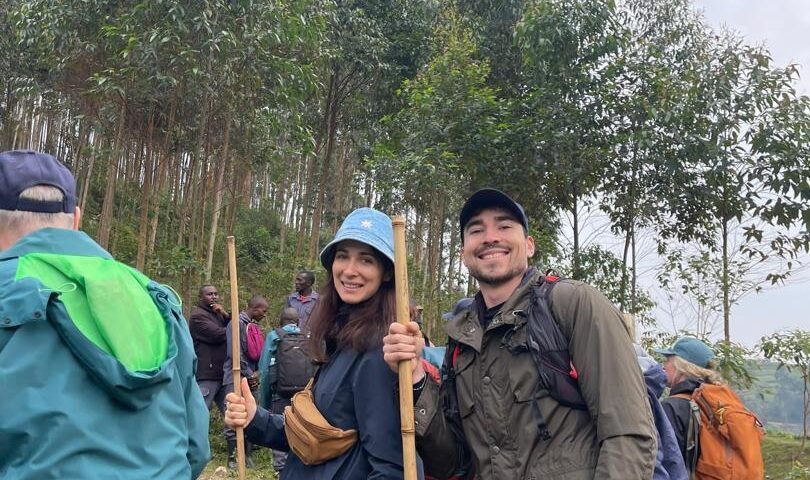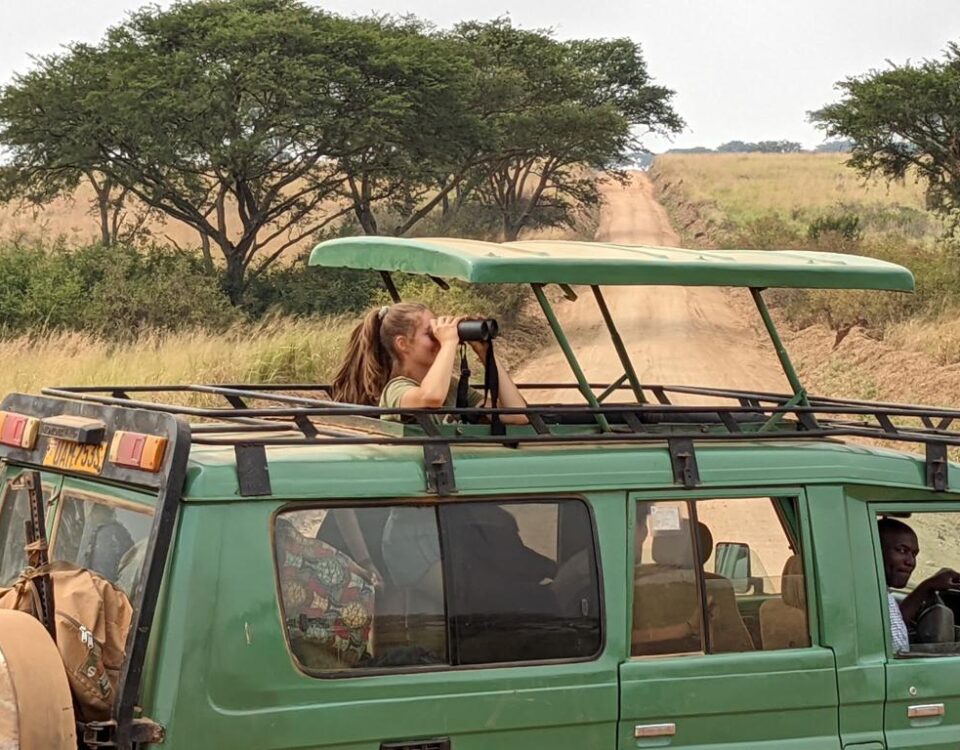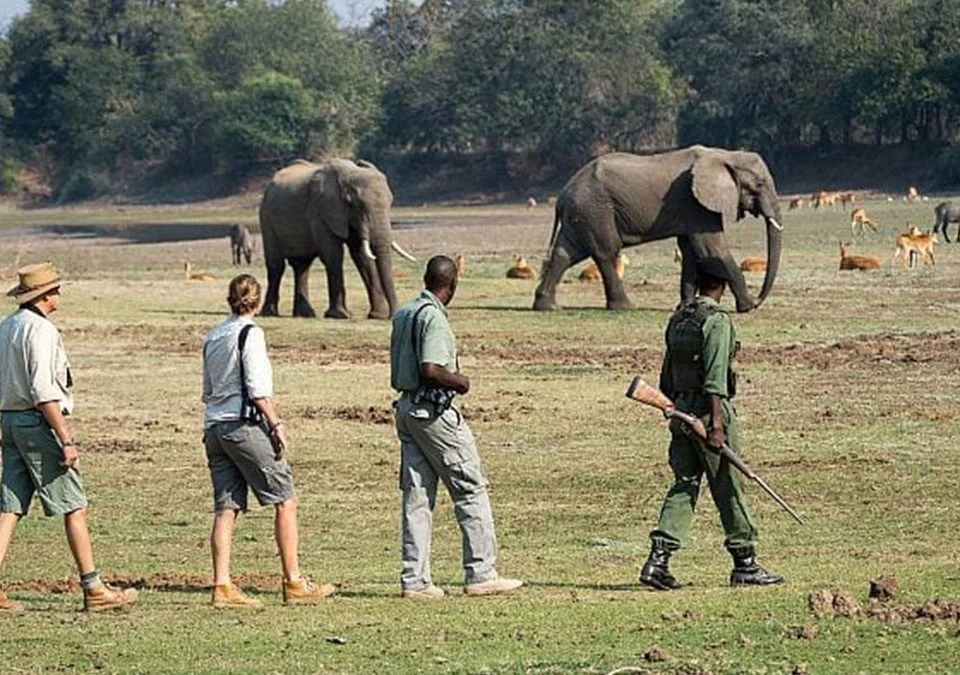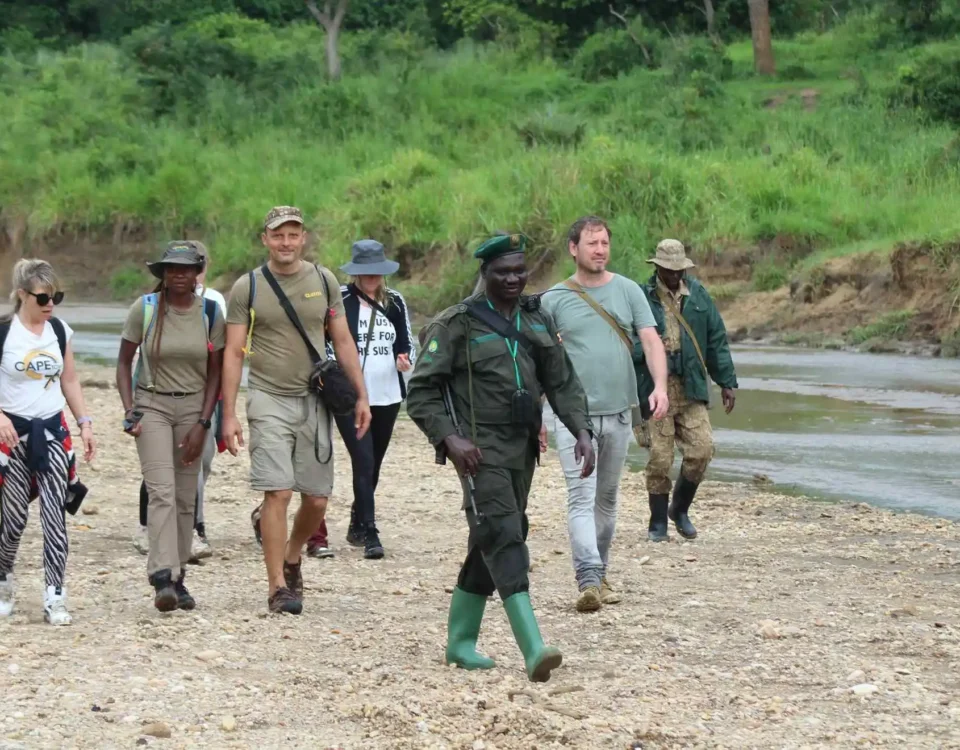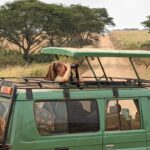
Is a Game Drive in Uganda Suitable for Solo Travelers or Groups?
August 11, 2025What is a Walking Safari in Uganda?
What is a walking safari in Uganda? In simple terms, a walking safari is an extraordinary way to explore Uganda’s rich wilderness on foot, offering travelers an immersive, authentic, and intimate encounter with Africa’s vibrant flora and fauna. Unlike traditional game drives or vehicle-based safaris, walking safaris allow visitors to connect directly with nature, uncover hidden wildlife tracks, observe unique bird species, and experience the land’s subtle sounds and scents in a way no vehicle can offer.
At Tubale Safaris, we understand that a walking safari in Uganda is more than just a trek—it is a deeply personal journey into the heart of Africa’s natural and cultural heritage. Whether you’re tracking elusive wildlife during a Uganda Wildlife Safari, searching for the rare mountain gorillas in a Uganda Gorilla Trekking Safari, or exploring indigenous communities through a Uganda Cultural Safari, walking safaris provide a versatile platform that blends adventure with education, conservation, and sustainable tourism.
Travelers often ask, “Is a walking safari safe? Can I combine it with gorilla trekking or chimpanzee tracking?” This article answers these questions comprehensively while highlighting why walking safaris are becoming a key part of the Uganda Best Safaris experience. We will explore the routes, safety protocols, cultural interactions, and how walking safaris complement other popular activities like Uganda Birding Safaris and Uganda Chimpanzee Safaris, ensuring you get the most out of your African adventure.
How Does a Walking Safari in Uganda Work? Understanding the Experience
To answer the question, “What is a walking safari in Uganda?”, it’s important to understand how these safaris operate and what makes them distinct. Walking safaris are guided nature walks conducted by professional, licensed guides and armed wildlife rangers. They are designed to be educational and safe, taking place in carefully selected areas where wildlife encounters can be both thrilling and controlled.
During a walking safari, guests traverse diverse landscapes—ranging from lush tropical forests and open savannahs to wetlands and community lands—on foot. This close-to-the-ground perspective allows you to appreciate the smaller details often missed on vehicle safaris: animal tracks, insects, unique plant species, and bird calls. Imagine standing quietly and spotting a troop of vervet monkeys leaping through the trees or catching sight of a rare shoebill at a marshland.
In many walking safaris, including those offered by Tubale Safaris, there is a possibility to combine this experience with Uganda Gorilla Safaris or Uganda Chimpanzee Safaris. For example, after an early morning gorilla trek in Bwindi Impenetrable Forest, you might enjoy a late afternoon walk with a local guide around nearby villages or forests, deepening your connection with the environment and local culture.
Walking safaris are especially popular in Uganda’s national parks such as Lake Mburo, Bwindi, and Kibale Forest. Each location offers unique wildlife sightings and cultural encounters. This fusion of adventure, wildlife observation, and community interaction makes walking safaris one of the most enriching ways to explore Uganda’s wilderness.
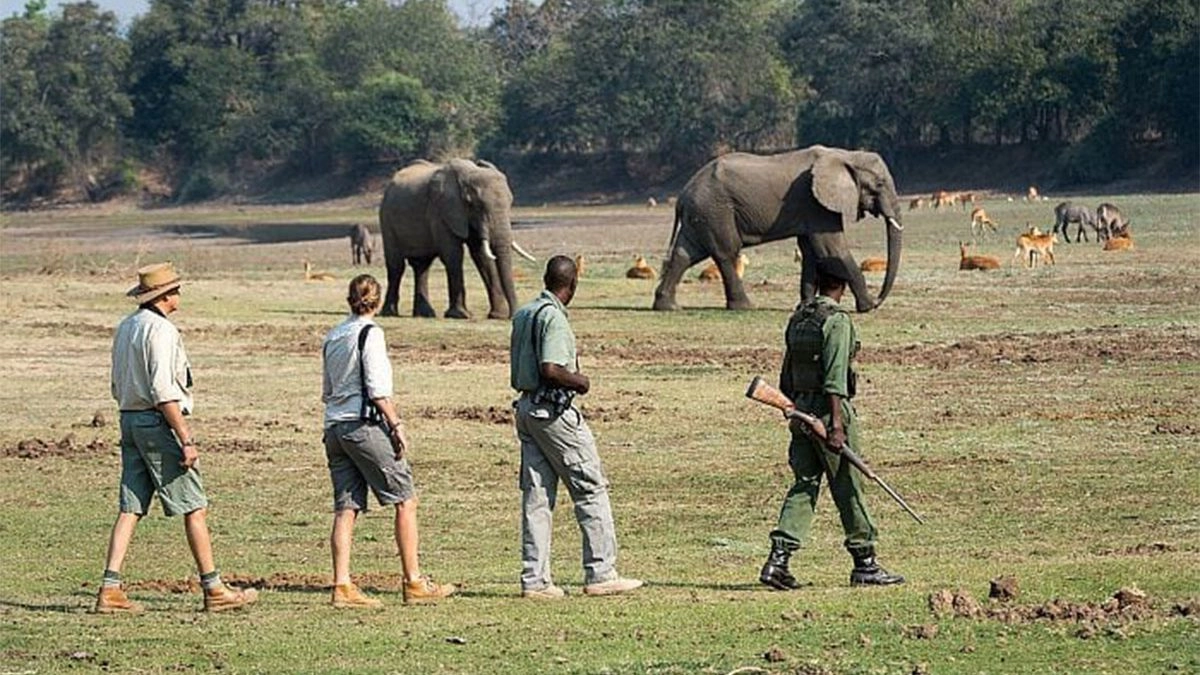 Are Walking Safaris in Uganda Safe? Expert-Led Adventures with Tubale Safaris
Are Walking Safaris in Uganda Safe? Expert-Led Adventures with Tubale Safaris
One of the top concerns travelers raise when asking “What is a walking safari in Uganda?” is safety. Walking safaris might sound risky due to their close proximity to wild animals, but rest assured, with Tubale Safaris, safety is paramount.
All walking safaris are led by Uganda Wildlife Authority (UWA) certified armed rangers accompanied by highly trained naturalist guides. These professionals are well-versed in animal behavior, first aid, and emergency protocols. Routes are carefully planned based on real-time intelligence on wildlife movements to minimize risk. Moreover, certain dangerous areas are off-limits, and strict guest safety briefings are conducted before any walk begins.
Whether you are walking through Lake Mburo’s grassy plains or Bwindi’s dense forests, your guides ensure you keep a safe distance from wildlife while maximizing your viewing opportunities. Walking in groups, following the guide’s instructions, and avoiding sudden movements are key safety practices that all guests observe.
Furthermore, Tubale Safaris integrates walking safaris into multi-activity itineraries combining them with Uganda Gorilla Trekking Safaris and Uganda Wildlife Safaris, ensuring seamless transitions and adherence to safety at every step.
By choosing Tubale Safaris, you gain the peace of mind that comes from expert leadership, thorough preparation, and a commitment to your wellbeing, making walking safaris a safe and unforgettable addition to your African adventure.
Which Destinations Are Best for Walking Safaris in Uganda?
When you ask, “What is a walking safari in Uganda?”, the answer includes knowing where to experience it best. Uganda offers a variety of breathtaking destinations where walking safaris flourish, each providing unique wildlife sightings and cultural richness.
Lake Mburo National Park is one of the best spots for walking safaris in Uganda. Its open savannahs and gentle hills allow for comfortable walking while spotting zebras, impalas, and warthogs. The park also hosts night walking safaris, a rare experience that lets you observe nocturnal animals.
In Bwindi Impenetrable Forest, famed for Uganda Gorilla Safaris, walking safaris take on a different form—often combining wildlife viewing with community visits to Batwa pygmies. Here, walking safaris are an opportunity to learn about indigenous forest conservation methods and local traditions.
Kibale Forest National Park, known for Uganda Chimpanzee Safaris, also offers guided nature walks to nearby wetlands and villages. These walks highlight the region’s extraordinary birdlife, including over 350 species, making it a paradise for Uganda Birding Safaris enthusiasts.
Other notable walking safari sites include Ziwa Rhino Sanctuary, where guests can track rhinos on foot, and Mabamba Swamp, where walking trails lead to rare bird species like the shoebill.
Each destination offers opportunities to combine walking safaris with gorilla trekking, chimpanzee tracking, or cultural experiences, ensuring your itinerary is varied, exciting, and immersive.
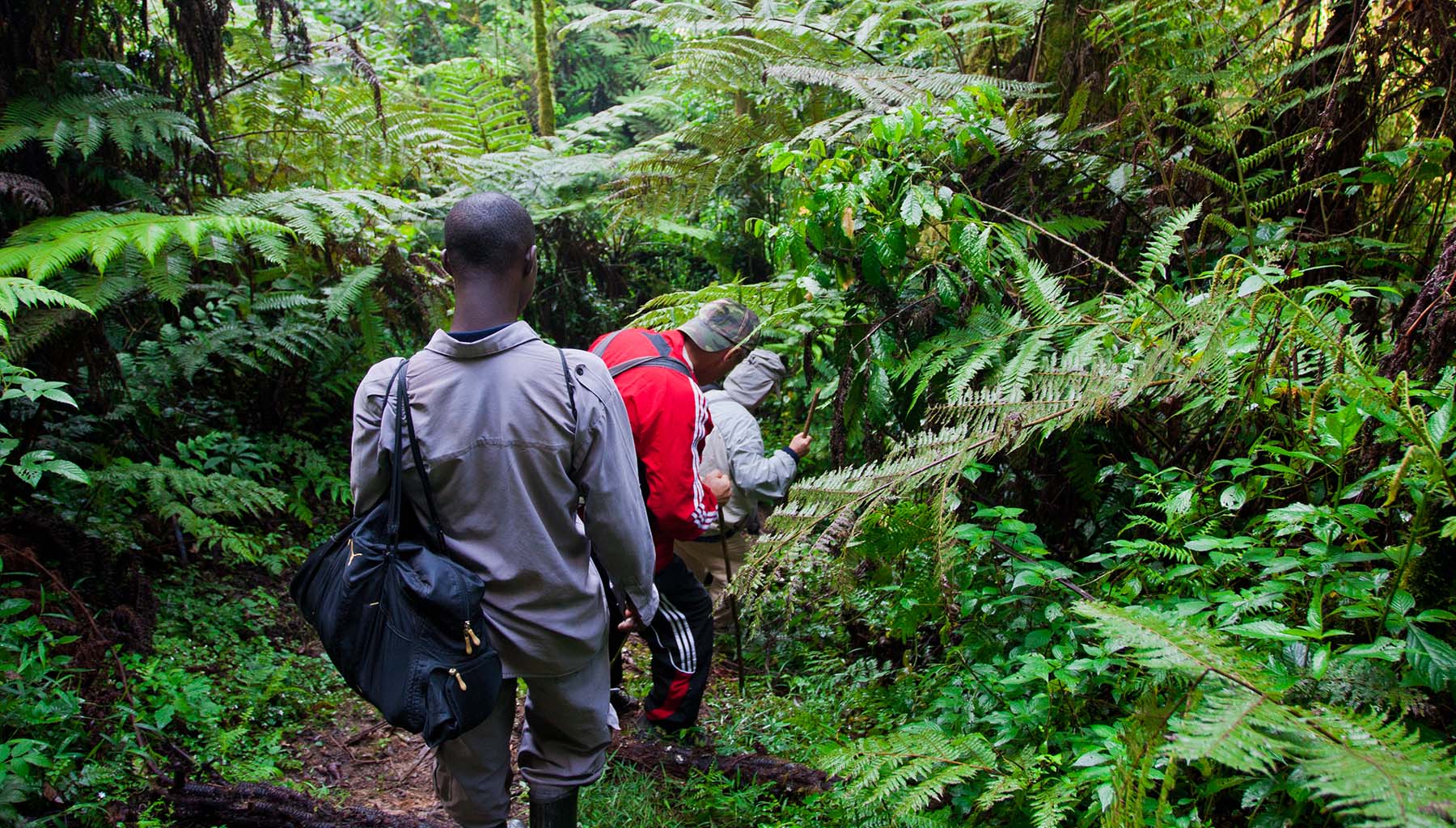 Can You Combine Walking Safaris with Uganda Gorilla Trekking and Chimpanzee Safaris?
Can You Combine Walking Safaris with Uganda Gorilla Trekking and Chimpanzee Safaris?
A common inquiry is, “Can I combine walking safaris with Uganda Gorilla Trekking Safaris or Uganda Chimpanzee Safaris?” Tubale Safaris proudly affirms that combining these experiences is not only possible but highly recommended.
Imagine starting your day trekking mountain gorillas through the misty forests of Bwindi, an awe-inspiring encounter with these gentle giants that few people ever witness. After this highlight, a walking safari through the surrounding villages or forest edges offers a peaceful contrast—allowing you to engage with local communities, learn about traditional forest usage, or discover the intricate ecology around the park.
Similarly, in Kibale Forest, after a thrilling chimpanzee tracking experience, you can enjoy a nature walk through Bigodi Wetland Sanctuary to discover an extraordinary array of birds, butterflies, and smaller mammals.
By combining walking safaris with primate trekking, travelers diversify their experiences, balancing adrenaline-fueled adventure with serene nature appreciation. This multi-layered approach aligns perfectly with what travelers seek in the Uganda Best Safaris—unique, authentic, and deeply engaging journeys.
What Cultural Experiences Can Enhance Your Walking Safari in Uganda?
The question “What is a walking safari in Uganda?” is incomplete without considering the vibrant cultural dimensions that walking safaris can reveal. Uganda’s rural communities are rich in traditions, art, and history, which travelers can experience firsthand through walking safaris.
Tubale Safaris offers walking itineraries that include visits to local villages, where guests participate in traditional dances, witness basket weaving, or learn how local cuisine is prepared. In the areas surrounding Bwindi, encounters with the Batwa pygmies—the original forest inhabitants—offer rare insights into indigenous lifestyles and forest stewardship.
In Eastern Uganda, walking safaris can lead you through coffee plantations, where you meet farmers and learn about one of Uganda’s major exports. You might also visit women’s cooperatives, gaining perspective on community-driven conservation and empowerment.
These cultural experiences enrich the walking safari, transforming it into a journey that touches both natural and human worlds. When combined with Uganda Gorilla Safaris or Uganda Wildlife Safaris, the cultural aspect provides a holistic, unforgettable African adventure.
Why Tubale Safaris is Your Trusted Partner for Walking Safaris in Uganda
Understanding “What is a walking safari in Uganda?” goes beyond the definition—it encompasses the trust, expertise, and deep local knowledge that enable such an experience to be safe, enriching, and unforgettable. At Tubale Safaris, we pride ourselves on delivering expertly guided walking safaris that combine the best of Uganda’s wildlife, culture, and adventure.
Our professional guides ensure safety without compromising authenticity. We customize itineraries that integrate walking safaris seamlessly with Uganda Gorilla Trekking Safaris, Uganda Chimpanzee Safaris, and other wildlife adventures, creating balanced and immersive journeys.
For travelers seeking a deeper connection to Africa’s wilderness and its people, walking safaris offer an unparalleled way to explore. Tubale Safaris invites you to step into the wild, embrace Uganda’s wonders on foot, and experience the true meaning of Uganda Safaris.

